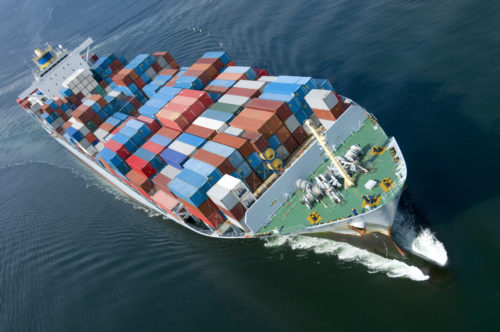Shipping confidence dipped slightly in the three months to end-November 2018, shipping adviser Moore Stephens said.
The average confidence level expressed by respondents fell to 6.0 out of a maximum score of 10.0, compared to the 6.3 recorded in August 2018.
Confidence on the part of all main categories of respondent was down, with the exception of brokers, where the rating increased from 4.9 to 5.2. Owners’ confidence fell to 6.4 from 6.8, which was originally the second highest achieved by this category of respondent in the life of the survey.
The confidence rating for managers, meanwhile, was down from 6.2 to 6.0 and that for charterers from 7.0 to 6.8.
Confidence was down in Europe, from 6.2 to 6.1, and in North America, from 6.8 to 5.2, but held steady in Asia at 6.3, equalling the highest rating achieved over the past 12 months.
The likelihood of respondents making a major investment or significant development over the next 12 months was unchanged at 5.5. Expectations of major investments were up in Asia from 6.1 to 6.2, but down in Europe from 5.3 to 5.2.
The number of respondents who expected finance costs to increase over the coming year was up from 59% to 67%. The figure for owners was up from 70% to 71%, while the figures for charterers and managers were up from 50% to 80%, and from 45% to 63% respectively.
The number of respondents expecting higher freight rates over the next 12 months in the tanker market was up by seven percentage points on the previous survey to 60%, while those expecting lower rates was up from 9% to 12%. In the dry bulk sector, expectations of rate increases were unchanged at 38%, accompanied by a four percentage point increase to 15% in the numbers anticipating lower rates. The numbers expecting higher container ship rates, meanwhile, fell by one percentage point to 25%, compared with 24% anticipating lower rates.
Furthermore, 24% of respondents said they expected the price differential between high-sulphur fuel oil and IMO-compliant low-sulphur fuel oil at January 1, 2020 to be between USD 250 and USD 324 per metric tonne. 23% put the figure at between USD 175 and USD 249, while 18% estimated it at between USD 325 and USD 399. 12% thought the cost differential would be between USD 100 and USD 174.
“It is disappointing to close the year with a small downward tick in confidence. But shipping is nothing if not volatile, and there will always be ups and downs. We should not forget, either, that it was in 2018 that confidence reached a four-year high,” Richard Greiner, Moore Stephens Partner, Shipping & Transport, said.
Copyright Ships & Ports Ltd. Permission to use quotations from this article is granted subject to appropriate credit given to www.shipsandports.com.ng as the source.

